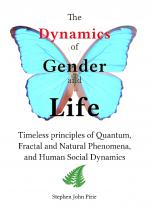[Excerpt Be and Become, © ProCreative, Sydney 2000]
In an earlier section in this chapter it was suggested that to be at-one with others and the world around us requires that we be more ourselves. That we be more individual and that we need to honour our deepest desires and goals.
Perhaps we can more clearly see the reverse of this principle in operation by considering the many serious detrimental effects arising out of the denial of Endividuality (expanded, empathic, enthusiastic individuality).
In many cultures, politicians believe that “getting tough on crime” is a solution to the perceived increase in crime. We need only observe how the United States has some of the most severe penalties for criminal behavior (including the death penalty) of all the Western democracies and yet
the US now has the highest rate of incarceration in the Western world—four times that of Australian and most European countries. In 1990, the US prison population was 300,000. Federal and State jails in America today (1997) hold more than 1.2 million inmates’.1
On a broader scale,
In fact,
neither the lash nor the executioner, neither the psychiatrist nor the psychologist—and certainly not the prison—has been shown to provide measurable increments of crime control.3
And yet, despite this,
Generations of research have failed to disturb the commonsensical but false view that increased severity of punishment will produce less crime, that increased reliance on imprisonment is to be preferred to other nonincarcerative punishments.4
Clearly, despite the long history of imprisonment and punishment, research has so far failed to establish a link between punishment and the deterrence of criminal activity. Getting “tough on crime” is clearly not the solution to the increasing rate of crime. Yet we still see legislators and politicians ignorantly introducing pernicious “zero-tolerance” laws—laws which inevitably must breed greater dis-ease, lawlessness and alienation.
Lets consider some aspects of American culture so that we can come to understand the root cause for the high rate of crime in their society.
If we look down the right side of the Table of One and All, under the heading “Western culture” we can readily see that the United States qualifies for being the epitome of “maleness.”
It is a society which sees reality as being strictly local. It is a highly individualistic, competitive, free-market, business-orientated right-wing society with a strong adherence to fundamentalist religious doctrine. Hence the noticeable influence of the ultra conservative Moral Majority in American politics.
Out of this strong bias towards “maleness” comes a clear and unavoidable emphasis upon right and wrong. The culture has a clearly defined division between what is considered Good and Evil. (As an aside, it is not a coincidence that traditionally it was the man of the household who was usually the strict disciplinarian).
Recall from previous material in this book that such a strict delineation of Right versus Wrong (Evil) ultimately results in a denial of individuality. Which in turn leads to criminal behavior. When we recognize that criminals are in fact in a state of emotional dis-ease, we can more readily understand why increasing the severity of penalties only goes to increase the crime rate. If this is still not easily seen, consider this analogy: Imagine a child who is sick, someone who is feeling poorly. With this analogy it follows that:
- 1. David Hay, “A Time Bomb Ticks Behind Prison Bars,” The Sydney Morning Herald, August 16, 1997, p. 28.
- 2. Norval Morris and David J. Rothman, The Oxford History Of The Prison: The Practice of Punishment in Western Society, Oxford University Press, Oxford 1995.
- 3. Morris and Rothman, p. 257.
- 4. Morris and Rothman, p. 257.
 "The Dynamics of Gender and Life" ebook is now available at
"The Dynamics of Gender and Life" ebook is now available at